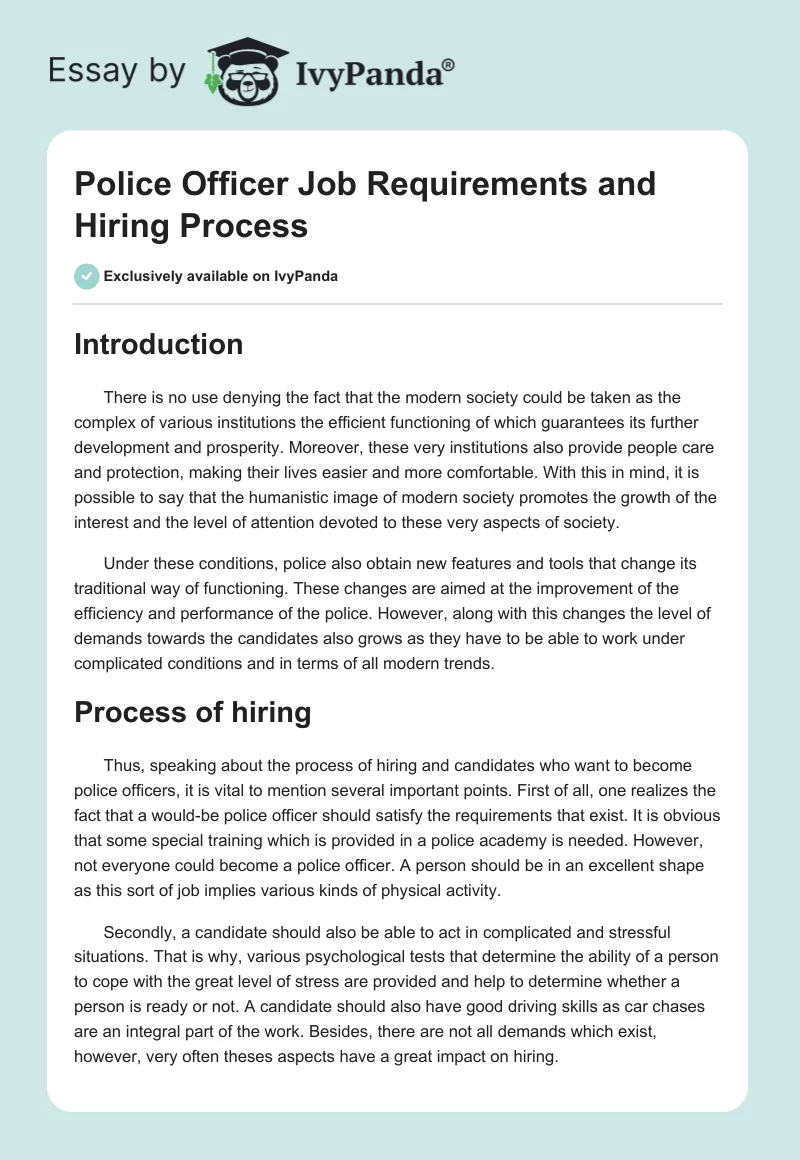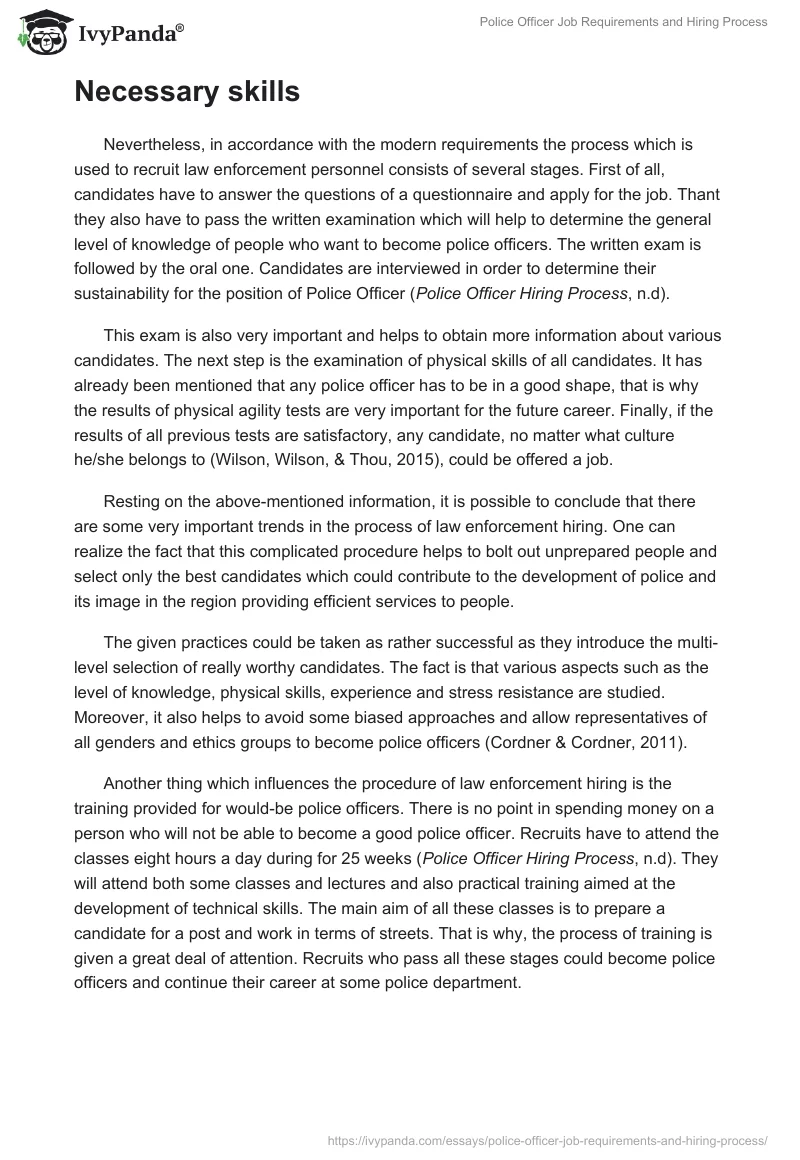Introduction
There is no use denying the fact that the modern society could be taken as the complex of various institutions the efficient functioning of which guarantees its further development and prosperity. Moreover, these very institutions also provide people care and protection, making their lives easier and more comfortable. With this in mind, it is possible to say that the humanistic image of modern society promotes the growth of the interest and the level of attention devoted to these very aspects of society.
Under these conditions, police also obtain new features and tools that change its traditional way of functioning. These changes are aimed at the improvement of the efficiency and performance of the police. However, along with this changes the level of demands towards the candidates also grows as they have to be able to work under complicated conditions and in terms of all modern trends.
Process of hiring
Thus, speaking about the process of hiring and candidates who want to become police officers, it is vital to mention several important points. First of all, one realizes the fact that a would-be police officer should satisfy the requirements that exist. It is obvious that some special training which is provided in a police academy is needed. However, not everyone could become a police officer. A person should be in an excellent shape as this sort of job implies various kinds of physical activity.
Secondly, a candidate should also be able to act in complicated and stressful situations. That is why, various psychological tests that determine the ability of a person to cope with the great level of stress are provided and help to determine whether a person is ready or not. A candidate should also have good driving skills as car chases are an integral part of the work. Besides, there are not all demands which exist, however, very often theses aspects have a great impact on hiring.
Necessary skills
Nevertheless, in accordance with the modern requirements the process which is used to recruit law enforcement personnel consists of several stages. First of all, candidates have to answer the questions of a questionnaire and apply for the job. Thant they also have to pass the written examination which will help to determine the general level of knowledge of people who want to become police officers. The written exam is followed by the oral one. Candidates are interviewed in order to determine their sustainability for the position of Police Officer (Police Officer Hiring Process, n.d).
This exam is also very important and helps to obtain more information about various candidates. The next step is the examination of physical skills of all candidates. It has already been mentioned that any police officer has to be in a good shape, that is why the results of physical agility tests are very important for the future career. Finally, if the results of all previous tests are satisfactory, any candidate, no matter what culture he/she belongs to (Wilson, Wilson, & Thou, 2015), could be offered a job.
Resting on the above-mentioned information, it is possible to conclude that there are some very important trends in the process of law enforcement hiring. One can realize the fact that this complicated procedure helps to bolt out unprepared people and select only the best candidates which could contribute to the development of police and its image in the region providing efficient services to people.
The given practices could be taken as rather successful as they introduce the multi-level selection of really worthy candidates. The fact is that various aspects such as the level of knowledge, physical skills, experience and stress resistance are studied. Moreover, it also helps to avoid some biased approaches and allow representatives of all genders and ethics groups to become police officers (Cordner & Cordner, 2011).
Another thing which influences the procedure of law enforcement hiring is the training provided for would-be police officers. There is no point in spending money on a person who will not be able to become a good police officer. Recruits have to attend the classes eight hours a day during for 25 weeks (Police Officer Hiring Process, n.d). They will attend both some classes and lectures and also practical training aimed at the development of technical skills. The main aim of all these classes is to prepare a candidate for a post and work in terms of streets. That is why, the process of training is given a great deal of attention. Recruits who pass all these stages could become police officers and continue their career at some police department.
Conclusion
With this in mind, it is possible to make a certain conclusion. The job of a police officer implies that a candidate should have good knowledge, physical skills and be able to act under some complicated situations. That is why, to determine whether a person could be a police officer or not a certain procedure of law enforcement hiring is introduced. It analyzes the most important skills of a candidate and determines his/her future career. The given procedure could be called rather efficient as it helps to continue development of police and improve the performance of the would-be police officers.
References
Cordner, G., & Cordner, A. (2011). Stuck on a Plateau? Obstacles to Recruitment, Selection, and Retention of Women Police. Police Quarterly, 14(3), 207-226. Web.
Police Officer Hiring Process. (n.d.). Web.
Wilson, C., Wilson, S., & Thou, M. (2015). Perceptions of African American Police Officers on Racial Profiling in Small Agencies. Journal of Black Studies, 46(5), 482-505. Web.


